That Fit Friend is supported by its readers. I [Jake Boly] run this site myself and buy the gear I review. If you purchase through my site, I may earn commissions on sales, read more here!
Table of Contents+
I cannot stress enough that if you’ve landed on this article and you’re new to barefoot shoes, you’ll want to acclimate to them slowly.
Don’t be the person who shifts to using them full-time only to overly fatigue your ankles and feet and eventually loathe wearing them. If you need some insights on acclimating to barefoot shoes, make sure you check out my practical guide discussing this topic.
Like traditional shoes, barefoot shoes exist on a spectrum. Some are great for training, while others are better suited for casual wear when you want something nicer. Others excel for road running but stink for heavy strength training and hiking — this list goes on.
The Barefoot Shoes That Made the Cut
- Pick(s) for Lifting: Tolos Archetype 2.0
- Pick(s) for CrossFit: Vivobarefoot Motus Strength
- Pick(s) for Running: Xero Shoes Zelen
- Pick(s) for Women: Vivobarefoot Primus Lite Knit
- Pick(s) for Men: Inov8 Bare XF
- Pick(s) for Barefoot Beginners: AIRHAS Knit Barefoot Shoe
- Pick(s) for Walking and Daily Wear: Icarus Ascent Gen 2
- Pick(s) for Trail Running and Hiking: Vivobarefoot Primus Trail Knit FG
- Favorite Cheap Option: WHITIN Barefoot Sneakers
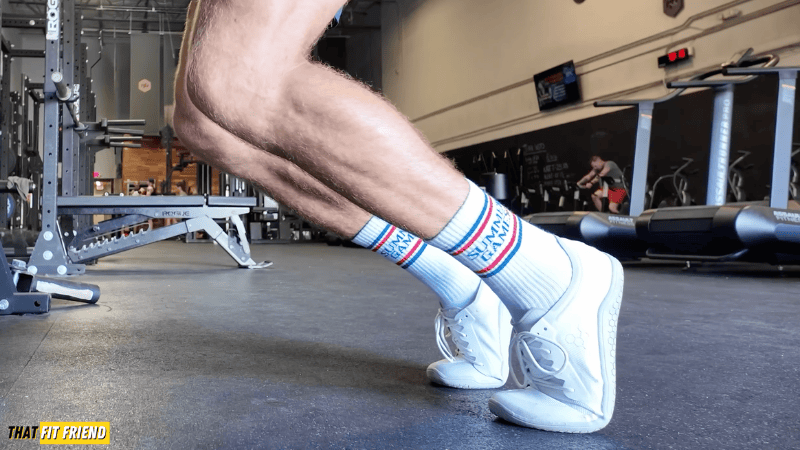
I (Jake) have purchased every pair of barefoot shoes featured in this article, reviewed them independently, and included them in this list based on their performance compared to their peers. No retail company has influence over my picks/say.
How Should Barefoot Shoes Fit
In a perfect world, you’ll want about a thumb’s width of space at the end of your toe box. This should give your feet plenty of room to splay and spread when acclimating because your feet will expand over time when wearing barefoot shoes.
- Aim to have a thumb’s width amount of space at the end of your toe box.
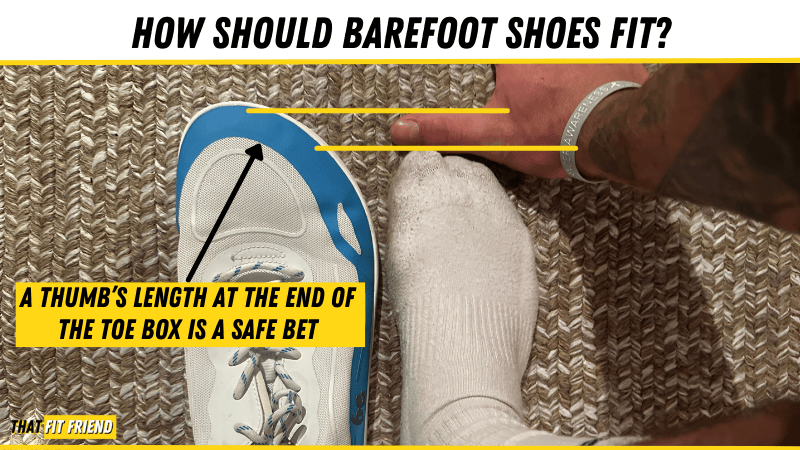
If you have a narrower foot or prefer a snugger fit, then aiming for half of a half of a thumb’s width can be a safe bet. When in doubt, ask me in the comments or on social media if you have doubts or need help with sizing.
Best Barefoot Shoe for Lifting: Tolos Archetype 2.0
It’s tough to beat the Archetype 2.0 when it comes to delivering for lifting. They give you a ton of ground feel, have decent grip, and can transcend just lifting and work great for cross-training and casual wear, too. They’re a solid do-it-all shoe.
Sizing Need to Know
- Removable Insole: No, but comes with an insole
- Width: Wide
- Narrower Feet Sizing: True to Size
- Wider Feet Sizing: True to Size
- Flatter Feet Sizing: True to Size
- Relative Sizing: Go the same size as Xero Shoes and Inov8.

For More Context
- For More Info: Read My Review
- Good Alternative: Inov8 Bare XF
- Tolos’ Return Policy: Learn More Here
Why I Chose Them
The Tolos Archetype 2.0 is my top pick for being a well-rounded barefoot shoe for lifting. To be honest, I regularly rotate between my Vivobarefoot Primus Lite III and Tolos Archetype 2.0 (and 1.0) for lifting as they’re both strong performers.
The perks of the Tolos Archetype 1.0 for lifting revolve around its low-profile and athletic fit and how well it articulates. For heavy deadlifts and squats on rubber gym floors and wooden platforms, the Archetype of 2.0 grips the floor well.




I also like how well the Tolos Archetype 2.0 can articulate with exercises like lunges and active foot exercises where you’re getting a lot of flexion through the toes and midfoot. These also feel better as you break them in more.
I think the only drawback that some lifters may have with the Tolos Archetype 2.0 is that its toe box isn’t as boxy as models like the Primus Lite III. If you have a foot that tends to work best with barefoot shoes that have a boxier toe box, then you’ll want to consider this.
What Other Reviews Say
A lot of community members have shared feedback on the Archetype 2.0 on my YouTube channel. In general, the feedback is positive and aligns with my assessment.
- Appreciate all your reviews. I used your link for the discount on my first pair of barefoot shoes, and I honestly love them! Came back to the review cause I wasn’t sure what side of the insole goes under foot and couldn’t find any answers anywhere else, but your video answered that for me! So thanks again.
- Finally got mine today and here’s my input. They are much easier to get on my high volume feet than the 1.0, but still a small struggle. They feel great but my biggest gripe is the width. Without socks they feel much better, but there just isn’t room for my pinky toes to spread out to their happy place. So far I’ve only tried them on and not trained or anything, haven’t decided if I’m keeping them. Also I got the all white model and the upper still looks slightly green or blue depending on the light. Was really hoping for the white balance issue to be fixed this time around as I noticed something similar when I tried on the 1.0.
- I have been using mine for about 2 weeks now for training / work (CPT). Getting them on is definitely a struggle, but I do appreciate how locked in my ankle is when they are on. I think if they were an 0.5-1 inch wider they would fit perfectly with most of my socks. Right now they feel best width wise with thinner socks. Xero’s still fit my foot the best overall, Vivo’s I had issues with the breaking, so these would be somewhere in the middle. Performance / look wise I prefer these over my Xero 360’s. Thank you for the review and overall content Jake!
The Bottom Line
These have proven to be a really solid do-it-all barefoot shoe, and they don’t break the bank. They can have some niche sizing limitations, but for the most part, they should deliver.
Best Barefoot Shoe for CrossFit: Vivobarefoot Motus Strength
Until recently, there hasn’t been a ton of barefoot shoes designed for CrossFit. The Motus Strength has been a nice exception to this with its more rigid and built-out upper. It does a good job at resisting the demands of CrossFit WODs.
Sizing Need to Know
- Removable Insole: Yes with finished internal construction
- Width: Wide
- Narrower Feet Sizing: Size down for most, true to size for some (ask Qs if you have them!)
- Wider Feet Sizing: True to Size
- Flatter Feet Sizing: True to Size
- Relative Sizing: Go the same size as Be Lenka and AVANCUS.
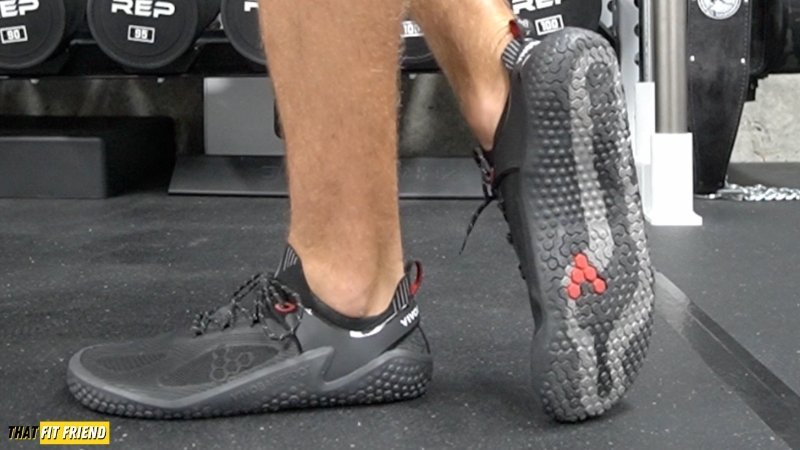
For More Context
- For More Info: Read My Review
- Good Alternative: Xero Shoes 360
- Vivobarefoot’s Return Policy: Learn More Here
Why I Chose Them
The Vivobarefoot Motus Strength performs exceptionally well for CrossFit and it’s been one of my favorite models for WODs to date. Compared to other barefoot shoes, the Motus Strength has a little more structure with its upper and outsole.
For example, TPU overlays cover the toe box protecting this shoe from exercises like burpees. Plus, the sole wraps over the medial and lateral midfoot which is great for durability and rope climbing support.
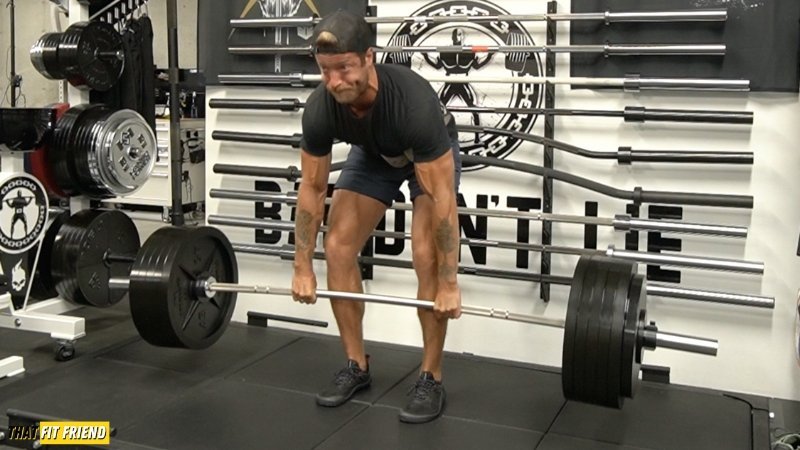



Compared to other Vivobarefoot shoes designed for lifting like the Primus Lite III, the Motus Strength also has more aggressive lugs which is great for things like heavy deadlifts, catching cleans, and gripping turf, rubber gym floors, and wooden platforms.
Outside of CrossFit, the Motus Strength also performs exceptionally well so if you’re on the fence about this shoe’s price I think you’ll get a wide range of versatility with this model which can make it more worth it.
What Other Reviews Say
Despite their higher price point, the Motus Strength has been a fan favorite for those who use them primarily for lifting and CrossFit.
- I bought these shoes because of this review and I have absolutely loved them. First pair of barefoot shoes ever and I could not be more thrilled with them. Thanks Jake!
- I just got mine yesterday and I agree with all the pros. I mainly do bodybuilding type workouts but I’m implementing more calisthenics and they felt great for that. The toe box did feel stiff in the creases so I’m glad that will go away after a while
- your reviews are really on point and always excited to watch them. Motus are my favorite Vivo shoe too. I wear an 11.5 US. Vivo doesn’t have 11.5 and primus 12 are loose but 11 is too tight. I found the vivo 11 motus to fit really great. My biggest issue with them is that they run hot, haven’t worn them without socks yet but I’m not sure I can wear them in really hot climates as my daily. The rubber on the top of the toes is really nice because that would rip easily when I was doing Bulgarian split squats with the primus. I found that your point of the rear rubber hook was interesting, I generally have an issue with hard plastics in the back of shoes but in this case no problem. This is the first time I’ve owned a booty construction vivo, I wonder how the elasticity will hold up over time. I also really enjoy them for barbel OHP and Squats, I was able to lock myself in more than ever before. With my primus I used them for hiking in water falls, submerged them under water and even swam with them, they held up very well. I’m considering returning my all weather primus trails and see if I can get similar use out of these although it would be off label.
The Bottom Line
If you want to tackle CrossFit workouts in barefoot shoes, it’s tough to beat the Motus Strength. Yes, they cost a bit more, but they’re worth it because they’ll be better durability wise than most of their peers.
Best Barefoot Shoes for Running: Xero Shoes Zelen
Note, I am by no means someone who is running marathons in barefoot shoes, I use and have tested my Zelen for short to mid-range runs (1-5 miles). This model has been my go-to for all workouts that blend lifting with running.
Sizing Need to Know
- Removable Insole: No, but comes with an insole
- Width: Wide
- Narrower Feet Sizing: True to Size
- Wider Feet Sizing: Go up a half-size
- Flatter Feet Sizing: True to Size
- Relative Sizing: Go the same size as Tolos and Inov8.

For More Context
- For More Info: Read My Review
- Good Alternative: Vivobarefoot Primus Lite 3.5
- Xero Shoes’ Return Policy: Learn more here.
Why I Chose Them
My favorite barefoot shoe for running is the Xero Shoes Zelen for a couple of reasons. This shoe delivers a strong performance for hybrid training sessions where you want to blend running with lifting.
I like that the Xero Shoes Zelen utilizes a tire-like tread on the sole. This feature gives you a nice bite on different surfaces and it feels grippy for faster sprint sessions and steady-state runs.



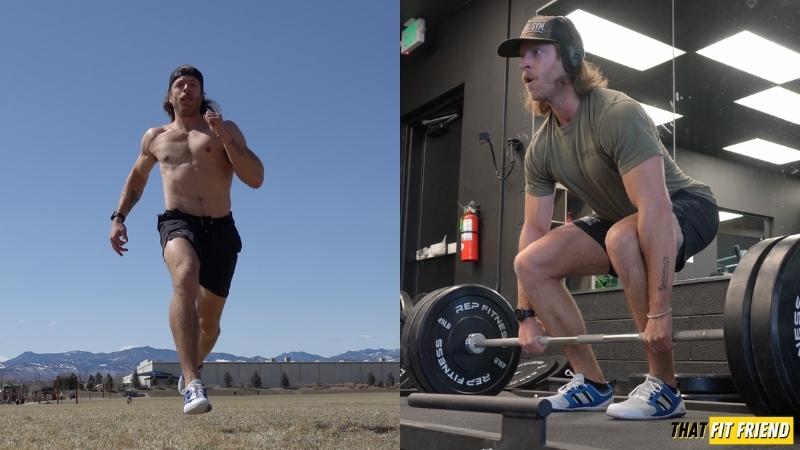
The upper in the Zelen is also a perk for running as it breathes super well. This can be a good model to wear with or without socks in warmer settings, so if you like to vary your sock use in barefoot shoes when running, you’ll enjoy this feature.
More specifically, if you’re looking for a barefoot shoe for running and lifting, the Zelen does a good job. Its flexibility, removable insole, and durability for both of these contexts are solid across the board.
What Other Reviews Have Said
In terms of feedback, these are usually heavily debated with the HFS in my community. Folks tend to use the Zelen for warmer climates and you’ll want to pay attention to their sizing.
- My pair arrived today. In regards to sizing. I wear a euro 42 but compared to my vivobarefoot and splays (both 42) the Zelen is almost a full size smaller, so not sure if the other 2 run big or the Zelen’s run small??
- Not great for winter…. I wear my speed forces when there is a foot of snow on the ground. My feet are always hot. I just want to know if it is actually wide or if the toe box is narrow like the HFS.
The Bottom Line
In my opinion, the Zelen is slept-on. If you live in warmer climates and you’re a hybrid athlete, I’d give these a try.
Top Barefoot Shoes for Women: Vivobarefoot Primus Lite Knit
When it comes to barefoot shoes for women, I defer greatly to my YouTube community and the feedback they provide on reviews. The Primus Lite Knit tends to be a highly favored model for the ladies.
Sizing Need to Know
- Removable Insole: Yes with finished internal construction
- Width: Wide
- Narrower Feet Sizing: Size down for most, true to size for some (ask Qs if you have them!)
- Wider Feet Sizing: True to Size
- Flatter Feet Sizing: True to Size
- Relative Sizing: Go the same size as Be Lenka and AVANCUS.

For More Context
- For More Info: Read My Review
- Good Alternative: TYR DropZero
- Vivobarefoot’s Return Policy: Learn More Here
Why They Were Chosen
The Vivobarefoot Primus Lite Knit is an awesome barefoot shoe pick for women. There’s a lot to like about the Vivobarefoot Primus Lite Knit from its appearance for daily wear and its performance in the gym.
The first thing to like about the Vivobarefoot Primus Lite Knit is its upper construction. The knit upper on this model breathes well for warmer weather use and it looks good from a daily wear appearance point of view.

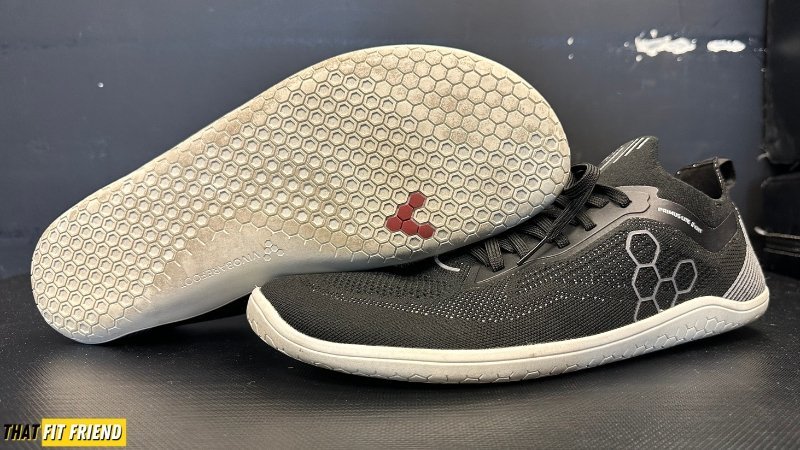


Another perk of the Primus Lite Knit is the Active Sole used in this shoe. This Active Sole has a stack height and thickness of 4mm so you get a nice low-to-the-ground feeling with this model.
For working out, the Vivobarefoot Primus Lite Knit works well for lifting and most cross-training contexts. The upper could be a little more secure for advanced plyometrics, but for most general training sessions, the Primus Lite Knit works well.
What Other Reviews Say
In general, this shoe tends to be well received. The discrepancies revolve around them running long and lacking the upper security for harsh cuts and sumo deadlifts/power exercises.
- Thanks Jake awesome review completely agree with the awesomeness of this shoe and that the sizing is long and unstable for explosive stuff and overpriced. I will size down
- So I just got mine – with a discount of 10% – the women’s also run a bit long IMO. The only other VIVOBAREFOOT shoe I have is the Tracker FG I bought like 4 or 5 years ago and they’re still going strong! All time favourite boots I’ve got a EU 41 L in them and now got the Primus lite knit in 40 and they’re a tiny bit too long and wide – I’ll keep them though and get a sole although then they won’t be properly barefoot but that’s alright. Rather a bit too much space then too little, I can imagine that my feet will spread out a bit more while wearing these on a regular base
- I love this shoe, but the ankle circumference is very tight and causes your foot to go numb. I understand it’s to keep debris and provide support but somehow unfortunately I had to return them back to Vivian barefoot. Please know I have skinny ankles too, and I tried to expand the ankle compression part and it still was unsuccessful. Any thoughts let me know.
The Bottom Line
For casual wear and some training, the Primus Lite Knit delivers. Remember, they’re a knit model, so if you need more lockdown, look into options like the Motus Strength. Also, make sure you check out my sizing tips!
Top Barefoot Shoes Pick for Men: Inov8 Bare XF
The Inov8 Bare XF can be a great option for dudes who want a barefoot shoe for training and casual wear. These have a wide fit with good upper volume, too, which is why I like them for men.
Sizing Need to Know
- Removable Insole: No, but comes with an insole
- Width: Wide
- Narrower Feet Sizing: True to Size
- Wider Feet Sizing: True to Size, go up a half-size for 2E+ feet.
- Flatter Feet Sizing: True to Size
- Relative Sizing: Go the same size as Xero Shoes and Tolos.

For More Context
- For More Info: Read My Review
- Good Alternative: Tolos Archetype 2.0
- Inov8’s Return Policy: Learn more here
Why I Chose Them
I’m telling you now, don’t sleep on the Inov8 Bare XF. The 210 V3, the prior iteration of this shoe, was a good model but it ran a bit narrow and had some grip issues at times. The newer Bare XF has been leveled up in many ways and has a wider fit.
This model is great for anyone who needs a shoe for lifting and cross-training. The outsole has good grip and has done a good job on rubber gym floors when I’m lifting, on turf when I’m pushing sleds, and on wooden platforms when I’m deadlifting.
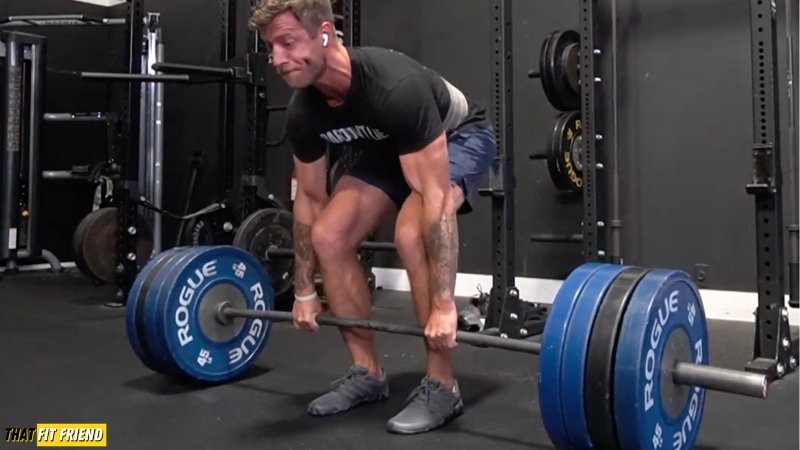


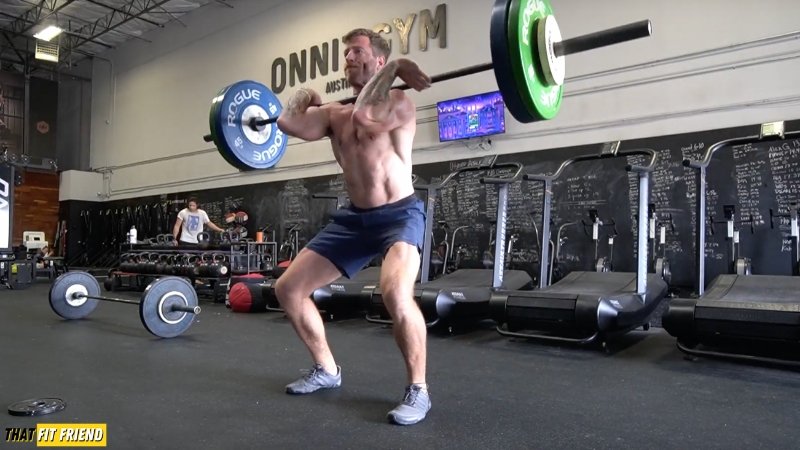
The BOOMERANG insole is also a nice addition to this shoe because it gives you a little extra cushion and comfort. I’ll leave it in when I’m doing a lot of jumping, sprints, and short runs in workouts, or if I’m wearing these for all-day wear.
I think another thing to like with the Bare XF is that its upper breathes fairly well and has held up well to my CrossFit testing. For most training contexts, these deliver and tick a lot of the boxes you want out of your barefoot shoes.
What Other Reviews Say
For the most part, these have been well received by the community. People tend to like their versatility for daily wear and training.
- A great “one shoe quiver” for traveling. Comfortable enough for daily wear, effective enough for the gym, and enough style for casual wear.
- Jake and that fit friend helped me determine a good size and offered a great deal on their website. I’m still breaking them in, but so far so good. Jake’s recommendation was spot on, and the shoes fit perfectly. Black and Gum look great. Will be using for all around workouts, from strength training to HIIT and rowing and short runs. After using nano x2’s for workouts and minimalist xero prio’s for my dailies, my feet expanded and the x2’s started to feel cramped and like more show than I wanted. Excited to used these.
The Bottom Line
These can be a smidge polarizing, but if they align with your feet, you’ll enjoy them. If you’re on the fence with them, buy through That Fit Friend Shop and I’ll cover your returns if they don’t work for you.
Favorite Pick for Beginners: AIRHAS Knit Barefoot Shoe
When thinking about barefoot shoes for beginners, my mind goes to shoes that have a lower price point and a little more cushion for acclimation purposes — that’s why I thought of the AIRHAS Knit Barefoot Shoe for this category.
Sizing Need to Know
- Removable Insole: No, but comes with an insole
- Width: Wide
- Narrower Feet Sizing: True to Size
- Wider Feet Sizing: True to Size
- Flatter Feet Sizing: True to Size
- Relative Sizing: Go the same size as Xero Shoes and Inov8.
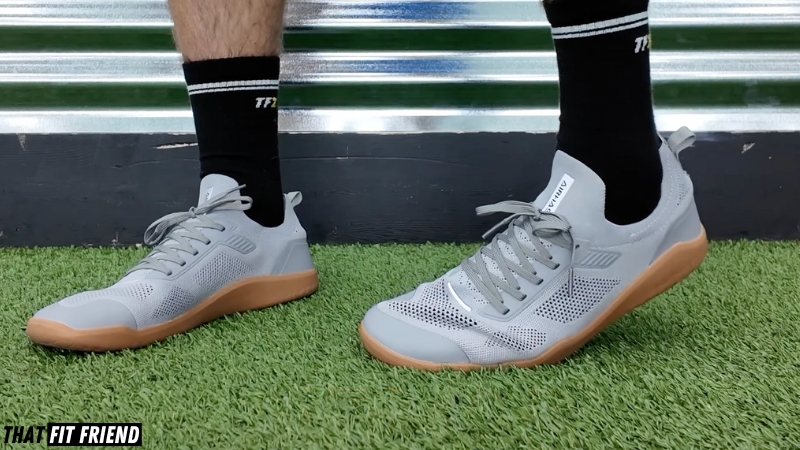
For More Context
- For More Info: Read My Review
- Good Alternative: Lems Primal Zen
- Amazon’s Return Policy: Learn more here
Why I Chose Them
I‘m going to be honest: I did not expect to like the AIRHAS Knit model as much as I have. I’m always wary of cheap Amazon shoes (and products in general) because the quality of what you get can vary GREATLY.
This model has shocked me. It’s surprisingly good for a little bit of everything with a ~$40 price point. I compare this shoe most to models like the Primus Lite Knit and TYR DropZero. They’re all built with a primarily a knit upper and built for training and casual use.
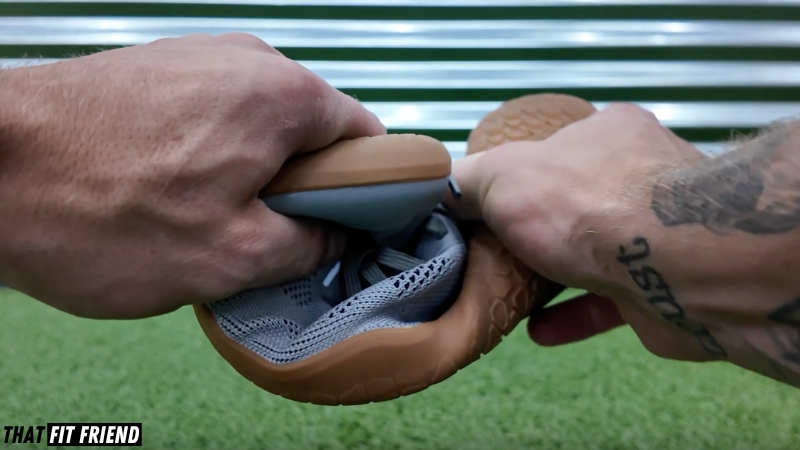
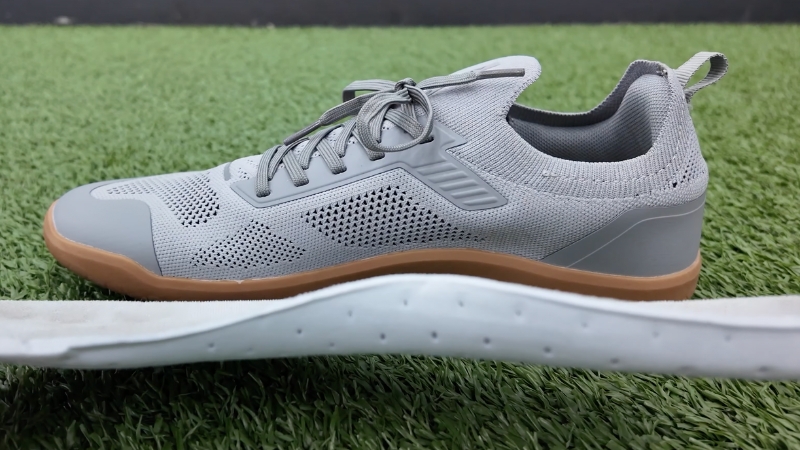

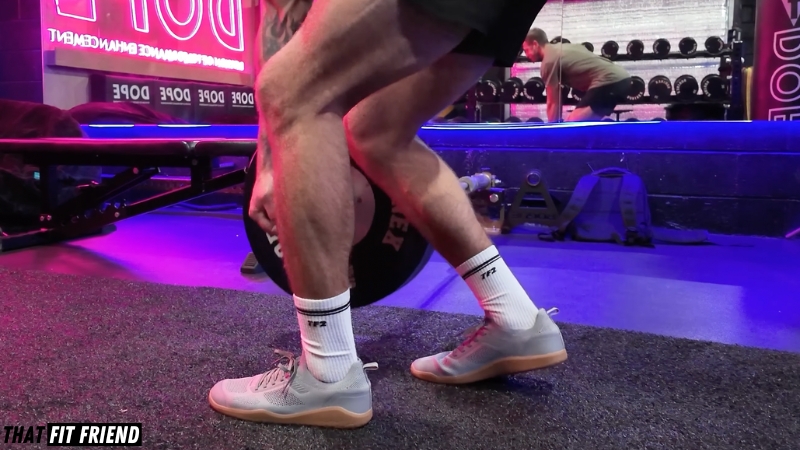
For training, the AIRHAS model has been solid for lifting and cross-training. The rubber outsole’s grip is fine for squats, deadlifts, and machine work. Plus, the knit upper breathes decently well and gives you enough security to lock you down while training.
I’ve also appreciated that the toe crease and tongue aren’t super uncomfortable due to the bootie-style construction. There’s a little more stack height in this model, too, which can be a great thing for beginners who are acclimating to barefoot shoes and unsure of them (low cost).
What Other Reviews Have Said
For the most part, the AIRHAS models tend to be fan favorites for beginners and budget shoppers. These models are newer in my community and for me, so once I get more feedback I’ll update this section.
The Bottom Line
If you’re new to barefoot shoes, you can’t beat how well the AIRHAS model performs for a cheap price. They also have a slightly higher stack height to give you a little more cushion.
Best for Walking and Daily Wear: Icarus Ascent Gen 2
When it comes to testing barefoot shoes for daily wear and walking, I’m mostly concerned with a shoe’s comfort, appearance, and long-term durability. The Icarus Ascent Gen 2 does a good job at ticking all of these boxes.
Sizing Need to Know
- Removable Insole: No, but comes with an insole
- Width: Wide
- Narrower Feet Sizing: True to Size
- Wider Feet Sizing: True to Size
- Flatter Feet Sizing: True to Size
- Relative Sizing: Go the same size as Xero Shoes and Inov8.

- For More Info: Read My Review
- Good Alernative: Xero Shoes Glenn
- Icarus’ Return Policy: Learn more here.
Why I Chose the Icarus Ascent Gen 2 Here
The Icarus Ascent Gen 2 is my top pick for walking for a few reasons. First, it’s a good option for walking in a wide range of contexts. For example, I like wearing and walking in the Ascent Gen 2 for travel, running errands, and working.
This shoe has been one of my go-to barefoot shoes for contexts where I want to dress up a little more. Whether I’m going to a coffee meeting or going into a WeWork and want to dress up a little more I like the Ascent Gen 2.


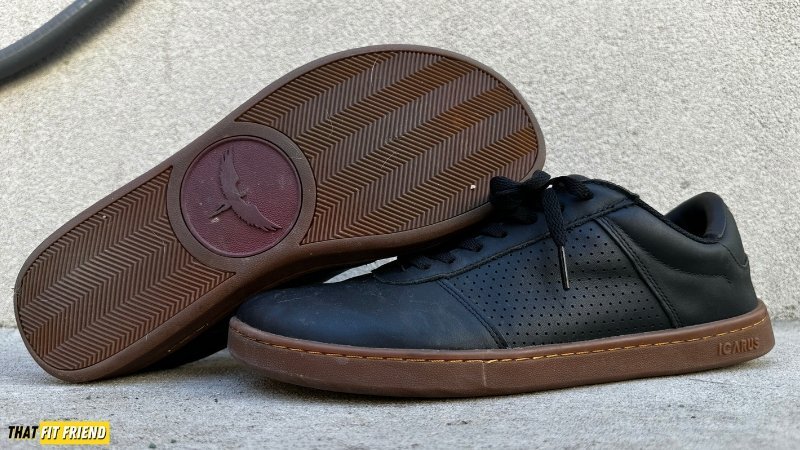
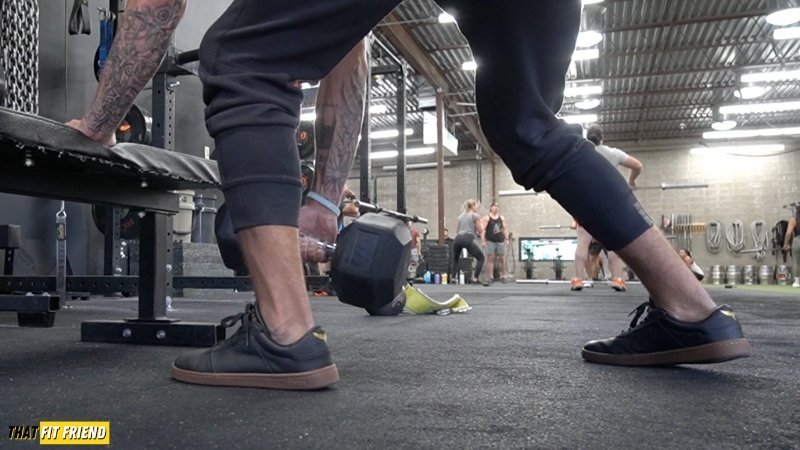
Second, this shoe can be a great option for a wide range of users because of its different insoles. This shoe comes with three different insoles that all vary in thickness and cushion. It gives this shoe a nice edge for comfort in different walking settings.
Third and lastly, this shoe’s herringbone tread pattern does a good job with durability and grip. Nothing is worse than commuting with barefoot shoes and sliding around on subway platforms or damp streets.
What Other Reviews Have Said
The Icarus Ascent Gen 2 tends to be a well liked shoe due to their quality and customer service. I’ve seen mostly positive comments from my community.
- I do want to make mention of how AWESOME the customer service is. I had the Gen 1 and returned them after a month. They were used all month and the return policy was honored with no questions. I just bought the Gen 2 and Andrew reached out regarding my first purchase (this was 10 months ago) and he gave me a heads up based on the size I bought versus the size I had in the Gen 1. He easily updated my orders size and had them shipped next day.
- I’ve tried on this shoe. Great shoe! I would recommend to go up a half size in this model if you plan to use the 4mm or more insole AND your feet hit the size exactly when you measure it at a shoe store. So if you’re a solid 12, I’d recommend 12.5. When I removed the insoles the 12 fit perfectly but that’s unfortunately not how i’m going to be wearing it. If you’re fit length is just under your size, then true to size is a good call.
The Bottom Line
If you like heavier leather barefoot shoes with a wide toe box, then these can be a great option. They also have different insoles for various comfort preferences.
Best for Trail Running and Hiking: Primus Lite Trail Knit FG
To assess barefoot shoes for trail running and hiking, I’m most concerned with three features of every barefoot trail shoe. I assess the outsole tread, upper durability, and foot protection. The Primus Trail Knit FG ticks these boxes really well.
Sizing Need to Know
- Removable Insole: Yes with finished internal construction
- Width: Wide
- Narrower Feet Sizing: Size down for most, true to size for some (ask Qs if you have them!)
- Wider Feet Sizing: True to Size
- Flatter Feet Sizing: True to Size
- Relative Sizing: Go the same size as Be Lenka and AVANCUS.

For More Context
- For More Info: Read My Review
- Good Alternative: Merrell Trail Glove 7
- Vivobarefoot’s Return Policy: Learn More Here
Why I Chose Them
The Vivobafrefoot Primus Trail Knit FG is my top pick for hiking and trail runs for a few reasons. And on that note, this shoe is taking the win here by a fairly comfortable margin.
There’s a lot to like about the Vivobarefoot Primus Trail Knit FG and one of my favorite things about this shoe is its versatility. For example, this shoe works well for hiking, trail running, working out, and even daily wear.
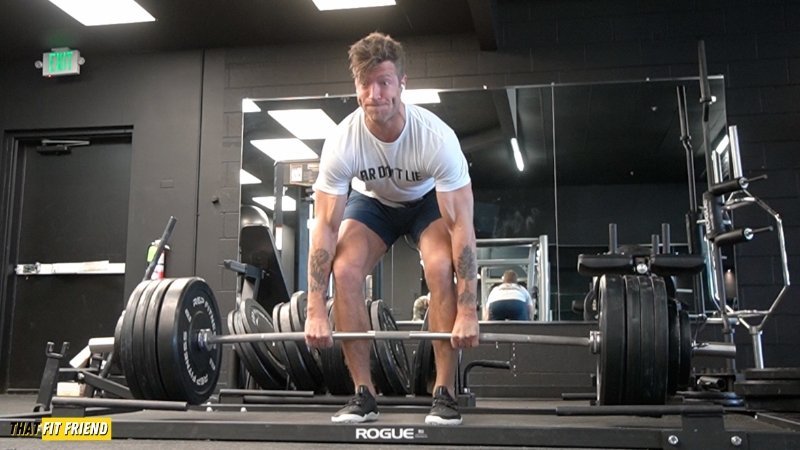



The knit upper construction gives this shoe a comfortable and breathable fit while the thicker lugs do a good job of promoting traction on different surfaces. I like doing versatile training in the Primus Trail Knit FG over the Primus Lite Knit for this reason.
Outside of its upper and grippy outsole, I also like FG tech in this shoe and how it provides a bit more protection for trail use. It’s not as minimalist feeling as the Vapor Glove 6, however, if you like a little more protection then you’ll appreciate this.
What Other Reviews Have Said
I think many agree with me that the Primus Trail Knift FG is an exceptionally solid shoe — if it fits your feet well. A lot of community like these for hiking and training, but have stressed the sizing can be tough with these.
- I just bought these, and they are the most comfortable shoes I have ever worn! They fit true to a Brannock device. I’m 10D and tried them on in store and size 10 USA / 43 euro fit perfect. I can’t imagine ever buying a different brand again.
- I got a pair of these for hiking and trail running and a pair of Primus lites for lifting and every day wear!
- Over all I like the shoe but it pinches my foot at the toe break; wore tie for run/wal on treadmill and 1 weight lifting session. I hope that with wear it will break in better. Definitely better tracking than motus but feels a more narrow/tighter than motus at size 12.5. I have a pair of white motus for in door gym use. Walking outside with a white shoe in chicago weather is not ideal so I will either keep the trail knits or get a pair of black motus to be my daily driver. Note. I defiantly feel the difference when running/walking with barefoot shoe vs the Nimbus and Kayano that I been using for the last decade.
The Bottom Line
When the Primus Trail Knit FG land…they really LAND. If you get your sizing right and need these for their versatility, they can be a solid option.
Favorite Budget Barefoot Shoes: WHITIN Barefoot Shoes
For this section, I rank the AIRHAS and WHITIN models interchangeably. Both of these models cost less than $60 and work great. Since I already covered the AIRHAS model above, I’ll discuss the WHITIN in this section.
Sizing Need to Know
- Removable Insole: Yes
- Width: Wide
- Narrower Feet Sizing: True to Size
- Wider Feet Sizing: True to Size
- Flatter Feet Sizing: True to Size
- Relative Sizing: Go the same size as Xero Shoes and Inov8.

For More Context
- For More Info: Read My Review
- Good Alternative: Lems Primal Zen
- Amazon’s Return Policy: Learn more here
Why I Chose Them
The WHITIN Barefoot Sneakers are taking my top pick by a comfortable margin. Not going to lie, I was skeptical of this shoe going into them based on their price point and the fact that WHITIN is Amazon-owned.
However, I’m happy to say that I’ve been subtly impressed with the WHITIN Barefoot Sneakers, especially for their price point. These shoes have a normal price of $49.99 but are often on sale and I bought my pair for $41.99.




For beginners who are just getting into barefoot shoes, these can be a great low-cost option. Plus, these shoes do have a bit more thickness to them regarding their sole and stack height which is great for those transitioning into barefoot shoes.
This may be a knock for those who love super minimalist feeling shoes, but for beginners and from a general comfort standpoint I enjoyed this model for walking, standing, and daily wear. These are also decent all-season shoes for what they are.
What Other Reviews Have Said
Like the AIRHAS, the WHITIN shoes typically receive high remarks. I think people tend to give them more leeway since they’re so cheap, to be honest.
- I have a black pair of the casual version and they look great after 2 months use. Had to take the insole out immediately in order to fit my high volume feet and they feel quite thin (low stack height). I tried on lots of models from Xero as well as the Vivo Primus Lite III, but none were wide enough for my feet to fit comfortably. These are so flexible they do the job for the price especially
- Lol I actually use mine with thicker socks for walking outside for my job in the winter around freezing temperatures. The thicker sole insulates against the frozen ground (which is what actually gives you cold feet) and the uppers are thick enough to stop the cold even on a motorcycle. For all other seasons I use Xero HFS and Merrell Gloves that are super breathable. Overall they’re amazing shoes. Basically a FeelGrounds copy at less than half the price and with a properly durable sole.
- I have an extra wide foot (4E), particularly in the midfoot, so I don’t have many traditional OR barefoot shoe options. I tried these and they are actually decent. I tried them for my casual workouts and they’re good. But it does take time to get used to them. Adjust your expectations, add an after market insole and it is a great budget cross trainer for regular workouts, if you have extra wide feet.
The Bottom Line
For the price and their width, it’s tough to beat the WHITIN Barefoot Shoes. They’re comfortable, have a little extra cushion for beginners, and cost less.
Why Use Barefoot Shoes?
Barefoot shoes can be used for a variety of reasons, and I think it’s important that you define why you want to wear them if you’re investing in a pair. Most commonly, barefoot shoes will be worn to support one’s “natural movement”.
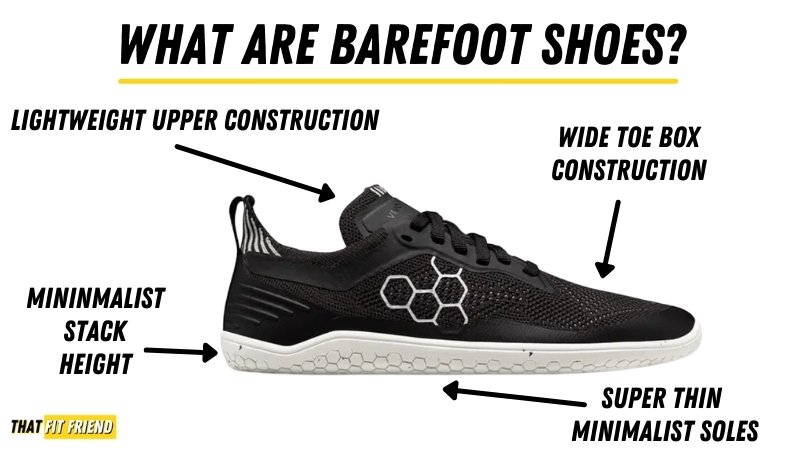
Basically, when we wear shoes we’ll alter our movement mechanics slightly and barefoot shoes will be utilized to limit this and provide a barefoot approach for regular movement. This can then influence our lower body mechanics when walking, running, and lifting because our feet will have a 0mm heel-to-toe drop and be a lot closer to the ground.
Another reason why folks will utilize barefoot shoes is to build up their foot musculature. There are 29 muscles associated with the foot and ankle. (1)
When we’re constantly wearing shoes, especially pairs with thicker midsole and outsole constructions, we can lose out on potentially building up the musculature of the feet and ankles.
By using barefoot shoes, we’ll be exposing the foot to a more variable environment so we can slowly build the intrinsic muscles of the foot.
In layman’s terms, barefoot shoes will help our feet rapidly change their positioning when moving due to them fully feeling the ground below them which can result in us using some of the smaller muscles in the foot.
Barefoot Shoes Benefits
Barefoot shoe benefits can vary pretty greatly depending on who you ask. For diehard barefoot shoe lovers, some of the benefits can be a bit grandiose.
To remain objective with my coaching point of view, below are some of the benefits that are pretty consistent across the board with barefoot shoes.
1. Increase Proprioception With the Ground
Since most barefoot shoes provide you with soles that are 6mm or less, you’ll have a much better means of “feeling” the ground below the feet. This can help your body better sense the surfaces you’re working on.

Proprioception is our body’s ability to sense the world around it, provide feedback to the brain, then calculate movement patterns that are conducive to the feedback it’s receiving.
Imagine stepping on a rock barefoot, your brain is going to rapidly process that sensation, then create a movement pattern to strategically move around it and keep you moving.
This is an example of the feedback loop we enter when our body is utilizing proprioception to help direct us to move efficiently and with strategy.
Improved balance can also be an aspect that comes along with better proprioception. More contact with the ground means more feedback to the brain. (2)
2. Improve Foot Musculature
As mentioned above, there are 29 muscles associated with the foot and ankle. Within the foot, there are smaller intrinsic muscles that help provide our foot with its shape. The foot has three major arches including the lateral longitudinal arch, medial longitudinal arch, and anterior transverse arch. (1)
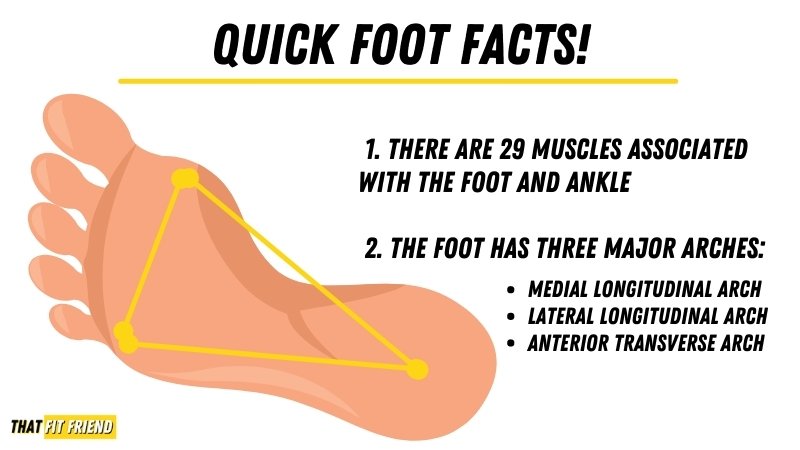
These arches are made up of muscles and multiple tissues that can be trained and strengthened through both direct and indirect work. Direct work would mean doing active foot exercises and drills and indirect work would be doing something like wearing barefoot shoes.
By simply wearing barefoot shoes, we can better train some of the smaller muscles of the foot that may be neglected when wearing thicker training, running, and normal shoes.
3. Promote Full Contact With the Ground
In a training context, barefoot shoes can also be useful for promoting how much contact the foot is making with the ground. For example, in movements like deadlifts and Romanian deadlifts, we ideally want the foot to be in full contact with the ground in what we often refer to as a tripod foot positioning.
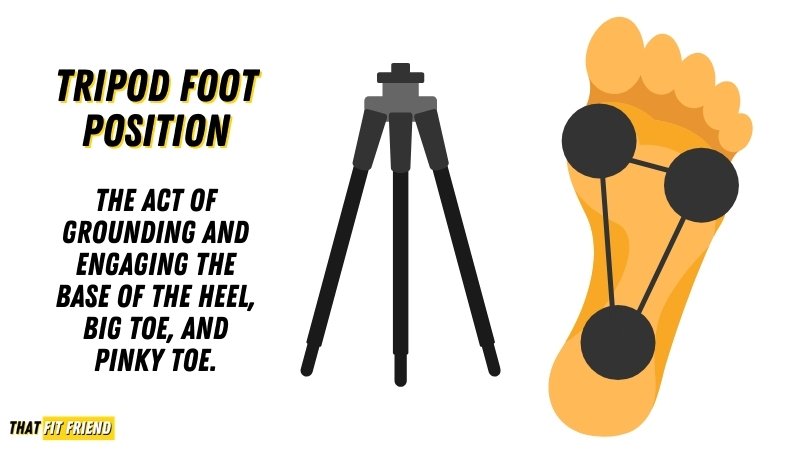
This entails grounding and gripping the floor with the base of the heel, big toe, and pinky toe, and I also like to coach grounding the big toe as well. With a barefoot shoe’s wide toe box and minimal sole, you’ll be able to easily feel the ground under the feet and promote stability from the ground up.
Takeaway Thoughts
There are more barefoot shoes on the market than ever and they continue to innovate based on the activity they’re designed to tackle. Whether you’re looking for barefoot shoes for running or CrossFit, there’s more than likely an option out that will fit your needs best.
If you have any questions about the barefoot shoes featured in this round-up, drop a comment below or reach out to me personally via Instagram (@jake_boly).
Works Cited
1. Card, R., & Bordoni, B. (2021). Anatomy, Bony Pelvis and Lower Limb, Foot Muscles. Statpearls Publishing.
2. Cudejko, T., Gardiner, J., Akpan, A., & D’Août, K. (2020). Minimal footwear improves stability and physical function in middle-aged and older people compared to conventional shoes. Clinical Biomechanics, 71, 139-145.

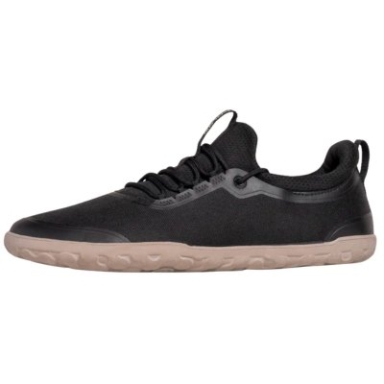
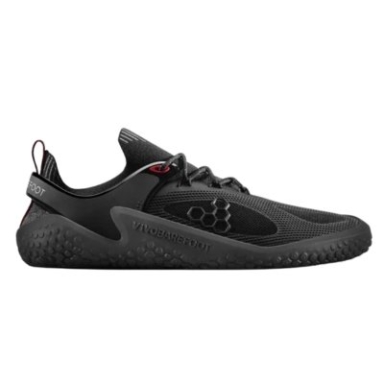


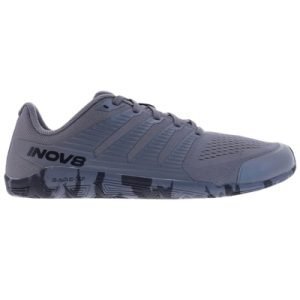
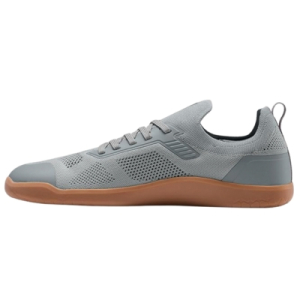


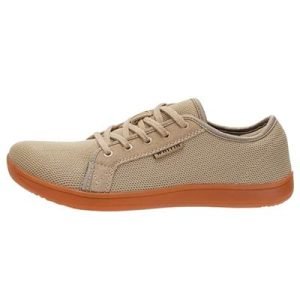


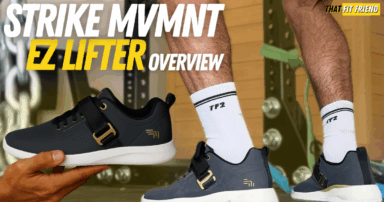
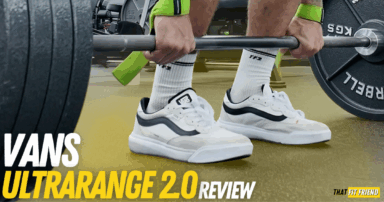
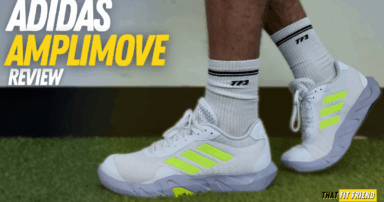
Theo
Hi Scott,
Thanks for making this content readily available. It’s well-written and informative. I’m not a serious trainer. I’m just looking for a barefoot shoe that’s deskjob-friendly and great for daily walks. I used to wear the super cheap FeiYue brand shoes when I teleworked, but I don’t like that the material isn’t so breathable. I think Merrell’s Vibram resolved that issue, but since I have to be in the office every day (in somewhat casual attire), I’ve been looking for alternatives. I though WHITIN Barefoot Sneakers might be good, but was curious whether you had any other recommendations?
On a personal note, I especially enjoyed reading your bio where you share how you’ve moved along this sports science/fitness career path. While I’m not so interested in competitive sports, I’ve always been into fitness, martial arts, and overall well-ness from lifestyle and philosophical perspective. A part of me would’ve loved to have taken this professional route.
Who’s Scott?! LOL
Appreciate you checking out the content. The WHITIN model could def be worth a try and they’re super cheap so it’s a pretty low risk investment for you!
Thank you for checking out the site and content!
Rama
Hi Jake,
Would like get your input and just about to try barefoot shoes for training.
im interested with vivo primus lite iii but would like get your input on sizing.
Im male, using UA tribase reign 6 with US 12 size, and i feel its really comfortable size for strength training and also some cross-training and HIIT.
Should i size down if i want to use vivo primus lite iii?
Eh, I’d start with 12 and adjust from there. Better to have them run a little long than be too snug from the jump. Believe I have some 12s on That Fit Friend Shop if you want to check them out. I’ll cover returns for you in the event you need to shift and try the 11 instead!
Steven C.
Hi Jake,
Thank you for yet another amazing roundup/review! I’ve been wearing Vivobarefoot Primus Lite III Mens for a number of years and absolutely love them for daily wear however find that they just don’t provide enough protection for daily / long distance walks (5+ miles). I read the above review and purchased the Prio Neo’s and while they provide a good balance of ground feel and protection (imo!) the toe box just isn’t wide enough (even with a .5 and 1 full up) as when I take a step my forefoot splays into the sides of the shoe and feels compressed. Might you be able to make any shoe recommendations with the same ground feel and protection as the Prio Neo but with a wider toe box that is suitable for long distance (5+ miles p/d) walking on pavement / road? I also would not complain if they were super-breathable and looked good lol! Thank you in advance for any thoughts you may have to share!
Chris
Hi, you are very thorough and detailed. Great review. But I would like to be able to try on before buying. Thank you for great reviews. Won’t be clicking on your links but will definitely support in future. Love how much work and effort you put into this.
That is allllll good about the links! Just you being here and reading/commenting is more than enough. I’m glad you found the content useful. Shout if you ever have additional questions!
Nina Sherwood
Hello Jake,
Thank you for your passion and enthusiasm for barefoot shoes. I am learning a lot from you. I was recently given a pair of Softstar Switchback boots as a gift and I have fallen in love. I live a very active lifestyle as I lift weights and regularly do cardio. I also work on a farm taking care of livestock which means I’m outdoors for 10 hours a day and am often in mud, rain and animal waste. I am wondering if you have come across any barefoot shoes that you would recommend for that type of work. Currently I wear LL Bean boots with the rubber across the toe box while at work and I have not come across anything that durable as far as barefoot shoes go. Do you have any reccomendations?
The Vivobarefoot Tracker boots and Xero Shoes Scramble Mid may be worth looking into! Pro tip, wear long socks when breaking in the Tracker Boots because the boot can be pretty tough on the heels at first. Let me know what you end up going for!
Vasso
Jake hi,
thanks for the article!
I have been wearing Vibram Five Fingers for working out, walk, and at work.
If you have ever tried them, I would like your opinion.
To be honest with you, I haven’t worn them and it’s because I’m just not a fan and don’t want my opinion on their appearance to ruin my ability to be objective. Maybe I should buy a pair, though, and give them an honest shot because I have heard good things about them over the years!
Gary H
Thanks for the article Jake! I have a short pinky toe that doesn’t like to plant, meaning I tend to pronate which leads to my knees coming inward (bad). I’ve ordered the Tolos and toe spacers to try addressing my situation. One question: what do you wear at home? Barefoot / sandals / socks? Much appreciated!
Hey Gary! Thank you for checking out the content, sincerely. I’m typically barefoot at home and rarely wear socks/sandals around the house. I’m often walking the dogs around my neighborhood barefoot, so I’m sure I get some looks from my neighbors, LOL. If you find that barefoot shoe help address your issue, then I’d slowly try to find more ways you can wear them without overdoing it/accumulating a bunch of fatigue. Barefoot around the house can be a great low-threshold way to build the feet, too!
neil
I see numerous shoes marketed as natural foot shape and stressing they are good for wide feet. I have been wearing Altras for years now but their selection for people with wide feet has grown slimmer (pardon the expression) over the years … to the point where there are only two of their shoes that fit my feet. I have U.S. 9.5 EE with narrow heels … are any of these compatible with my feet?
Hey Neil — I feel that. I wish definitions within the shoe industry would be consistent. It’s like Inov-8 “fit” scale…their wide is not really wide, LOL. For daily wear, the Splay Freestyle could be a good option. Wildling may also deliver a width that works well for you, I have some written reviews on their shoes.
For training, I’d stick to something like the Vivobarefoot Primus Lite III/Geo Racer Knit! If you want, I can send you some sizing videos via Instagram of these shoes so you can better first-person look. Just hit me on my personal or That Fit Friend page!
Chris
Hi Jake, I have had two pairs of the Xero HFS and love the width and minimal amount of cushion. However, they wear out extremely quickly, so I’m not sure buying them continually is worth it. Also, they do not have great grip, making them less than ideal for things like heavy sled pushes. What shoes would you say are the most similar to the HFS in terms of fit and cushion (with hopefully a higher quality tread)? I’m afraid that Merrell and Inov-8 will be too narrow, while Vivobarefoot will have absolutely no thickness in the sole. Thanks!
Hey Chris! I think you’d have better luck with the Merrell, but to your point, they both do run a smidge more narrow, relatively speaking. If the HFS did feel roomy for you, however, I think the Merrell would likely be fine. The Xero Speed Force may be worth exploring, too, especially if you can find them on sale anywhere.
Mark Naughton
I just want to say thanks for putting this out there. I found this site through your YouTube channel and it’s very nice to see someone doing a good job reviewing barefoot shoes. It seems a bit more awkward for me to get a lot of these brands affordably as I’m living in Europe, but I’ll keep looking. Hopefully I can find the right casual shoe reviews on this site or your YouTube channel that’s on sale without expensive shipping!
Thank you so much for checking out the content. To your point, I’m really hopeful that as barefoot shoes continue to expand and grow in demand so will their accessibility!
Mark Naughton
Just to return to my comment above if anyone is wondering, Groundies is pretty good for a European buyer. Free shipping to most of Europe & still Black Friday deals atm if you’re reading this today!
Debi Mules
I am a female who has had weak arches all my 71 years and developed a manageable bunion on one foot. Ten years ago I was introduced to the barefoot shoe and it change my life! My feet and body responded well while wearing them to gym and daily walking on asphalt. However within the past year walking 3 miles a day on asphalt has caused me to need more of a cushion between the shoe and the road. I bought a pair of Topo Ultra Fly 3 a couple months ago thinking this might help. But in the last month the Topo’s made my feet ached…I really wanted to love this shoes for active walking. I have the Zero HFS and Merrell Glove Trail 5 for the gym but to active walk on hard services it’s not working. Do you have any suggestions?
Hey! Thanks for sharing so much context. Check out the Xero Shoes Kelso — I just published a review on them. They have a slightly thicker sole than the HFS. I put them in the category as being a good beginner-friendly barefoot shoe because their sole is a bit thicker than other barefoot shoes and they have a removable insole so they have a bit more “cushion”, relatively speaking. I know you’re not a barefoot shoe beginner by any means, but that’s how I categorize this model due to it being a good option for helping with the acclimation process to barefoot shoes and it sounds like they may match your context really well.
They might be a good pick for you in the context of walking long distances! They’re sold out on Xero Shoes site, but you can get them on REI for $99 which is actually an error and they should be $109 — so may be worth looking into!